Excerpts from Jim Conrad's
Naturalist Newsletter
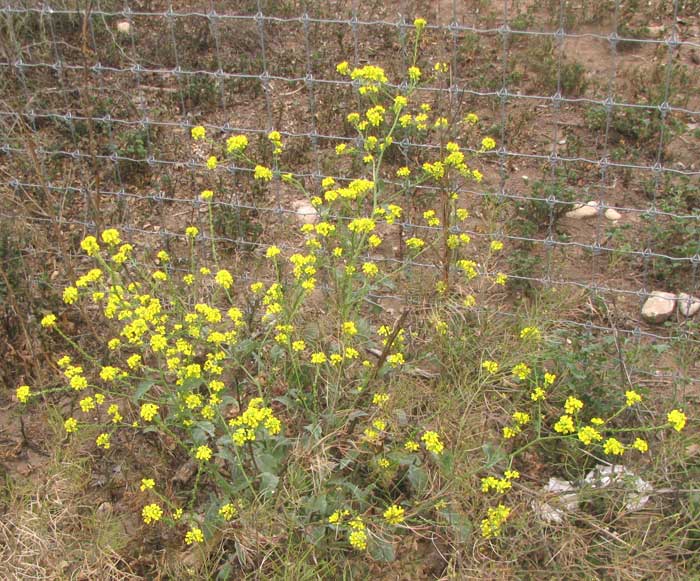
from the March 30, 2014 Newsletter issued from the Frio Canyon Nature Education Center in the valley of the Dry Frio River in northern Uvalde County, southwestern Texas, on the southern border of the Edwards Plateau; elevation ~1750m (~5750 ft); N29.62°, W99.86°; USA
BLACK MUSTARD
Spring flowers are still very sparse in our part of the upper Dry Frio Valley, but down below, just north of Uvalde where large fields of Mesquite/ Acacia scrub have been cleared for irrigated agriculture, there are large, fallow fields mantled with prodigious numbers of flowering plants, as you can see below:
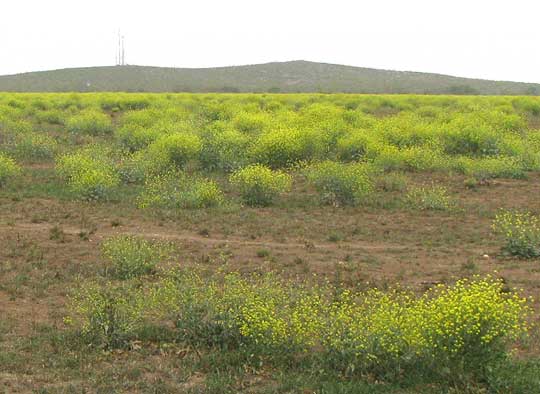
A single knee-high, somewhat scraggly plant is shown next to a fence at the top of this page. A stem-tip cluster of blossoms is shown below:
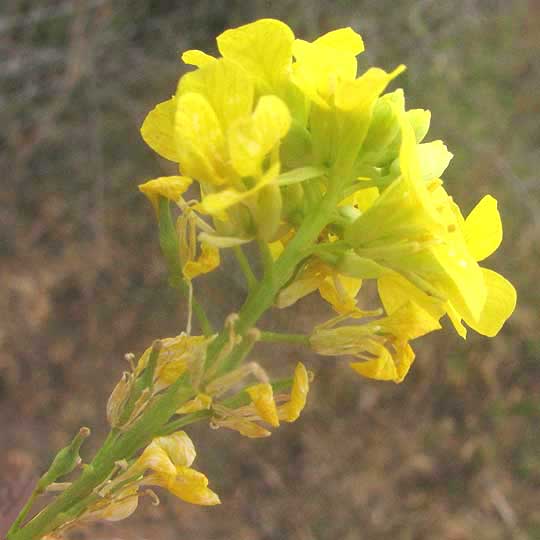
In that picture notice that immediately below the opened, fully intact blossoms at the cluster's top, flowers that blossomed earlier are losing their sepals, petals and stamens, and that at the picture's extreme lower, left corner there's a naked ovary, the future fruit, from which all sepals, petals and stamens have been shed. On farther down the raceme the ovaries are from older and older flowers, so the lower you go the more mature and larger the ovaries are, until it is better to refer to them as immature or almost mature fruits. Notice that the maturing ovaries are held close to the main flowering stem, instead of spreading away from it, for that's a good field mark for this group of plants.
A single flower is highlighted below:
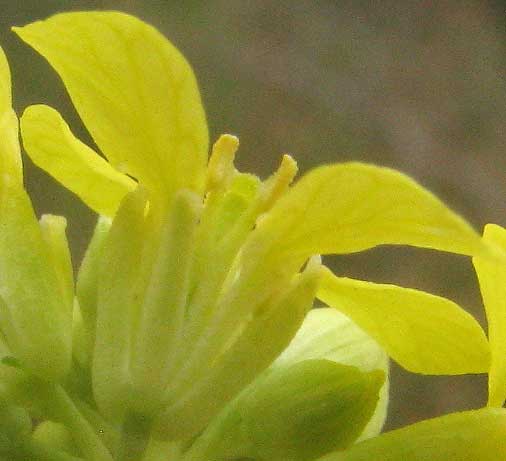
This side view shows a flower with four slender, greenish-yellow sepals, four yellow petals with broad outer parts narrowing to slender bases, or "claws," that attach just below the ovary. There are six yellowish stamens, of which two are shorter than the other four.
Well, every serious wildflower sniffer knows that these features point to the big Mustard Family, the Brassicaceae. And with such plump-looking ovaries (not long and very slender) on short stems, and pedicels held close to the main stem, we're directed to the mustard genus itself, Brassica. Though eight Brassica species are listed for North America, Brassica is an Old World genus, so all our Brassica species are invasive non-Americans.
An important field mark distinguishing our Brassica species from the other seven found in North America, are the lower leaves, of which a fungusy one is shown below:
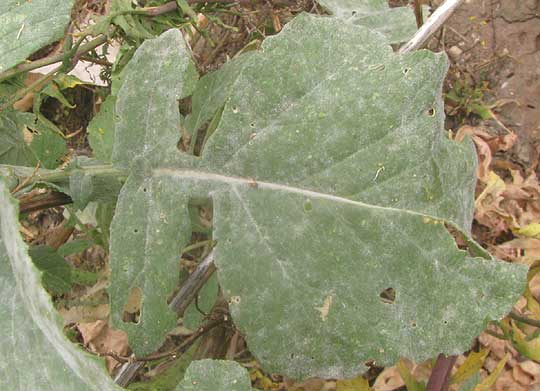
Notice that where the leaf's petiole, attaches to the plant's stem at the picture's far right, no leafy material is in contact with the stem. Leafy bases of some mustard species wrap around the stem, or form leafy "ears" projecting backward from the leaf, but here there's just the naked petiole attaching to the stem.
This is the Black Mustard, BRASSICA NIGRA, an early-spring "weed" throughout much of the world, but precisely because it presents such pretty shows of yellowness at a season when folks are ready for bright colors in the landscape, they're not much resented. In fact, Black Mustard is a fair source of nectar for pollinating insects, so in some places it's welcome.
Traditionally, Black Mustard seeds have been the source of yellow mustard spread. If you have dried seeds, soak them a couple of hours, grind or mash them into a pulp, then stir in water while beating until you get yellow hot-dog mustard. You can do this with several mustard species, but Black Mustard is the tangiest.
The leaves also can be boiled like regular mustard greens, though they're so pungent that most people prefer to mix them into other dishes to soften their very mustardy flavor.
In traditional medicine, poultices have been made of paste made from ground Black Mustard seeds. The poultice is applied to the skin over aching joints or parts of the body just feeling bad, and can be applied to the chest for colds. Whole seeds mixed with molasses have been swallowed as a laxative, and in general mustard spice is said to stimulate appetites and serve as a tonic. There are so many uses that later in the spring, if the field in the picture hasn't been plowed under, I hope to collect sacks of seeds for my own use.